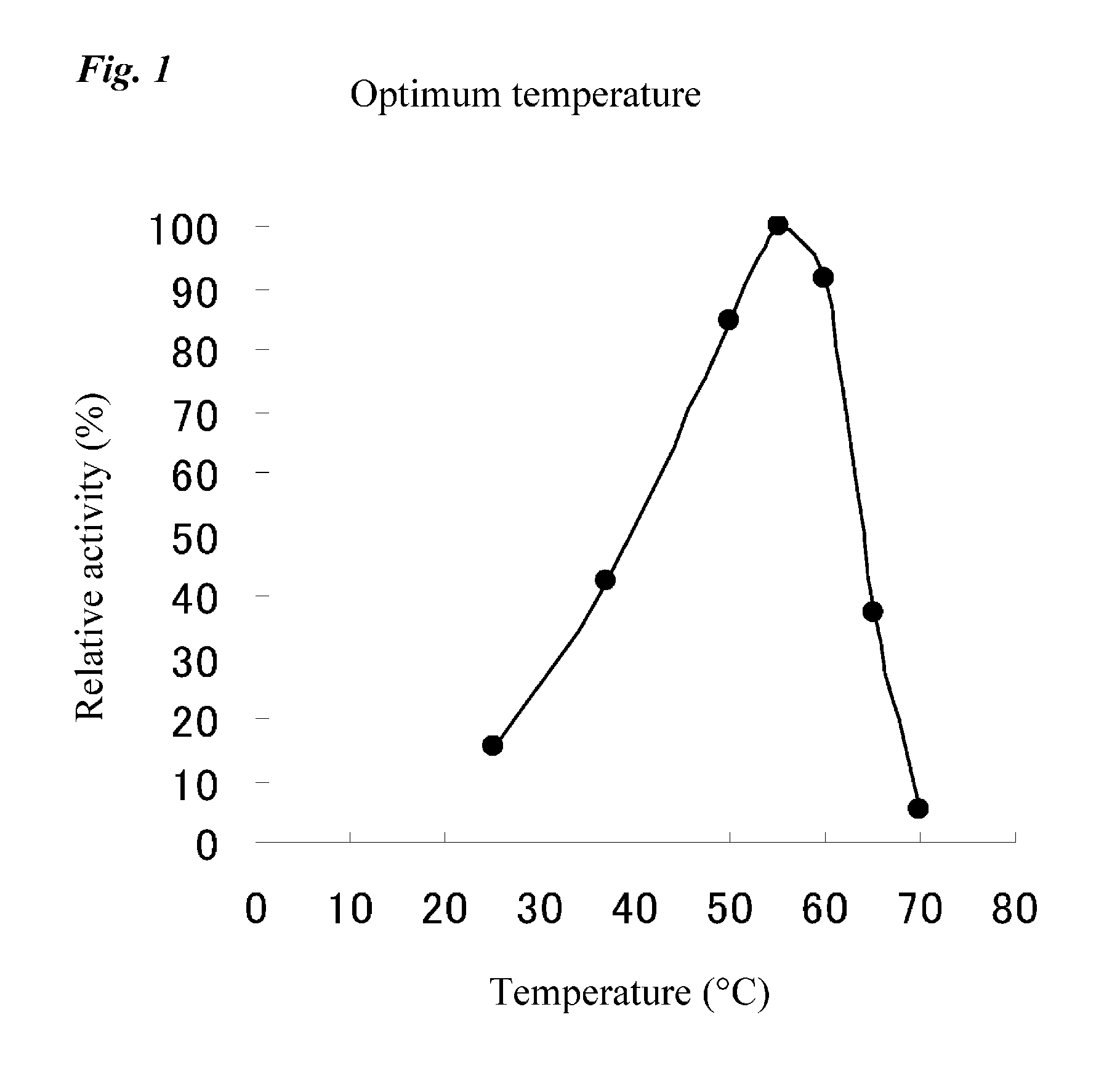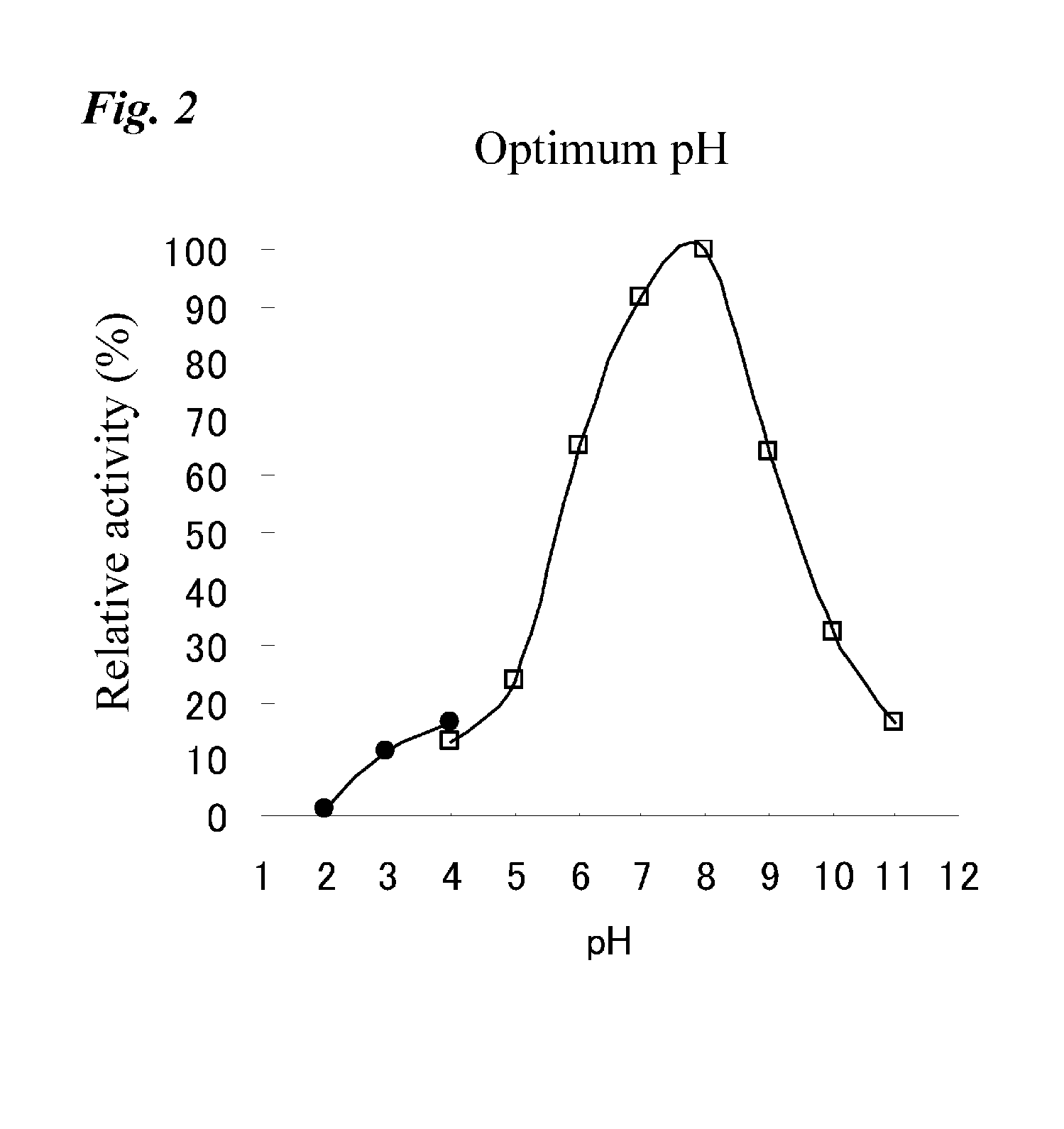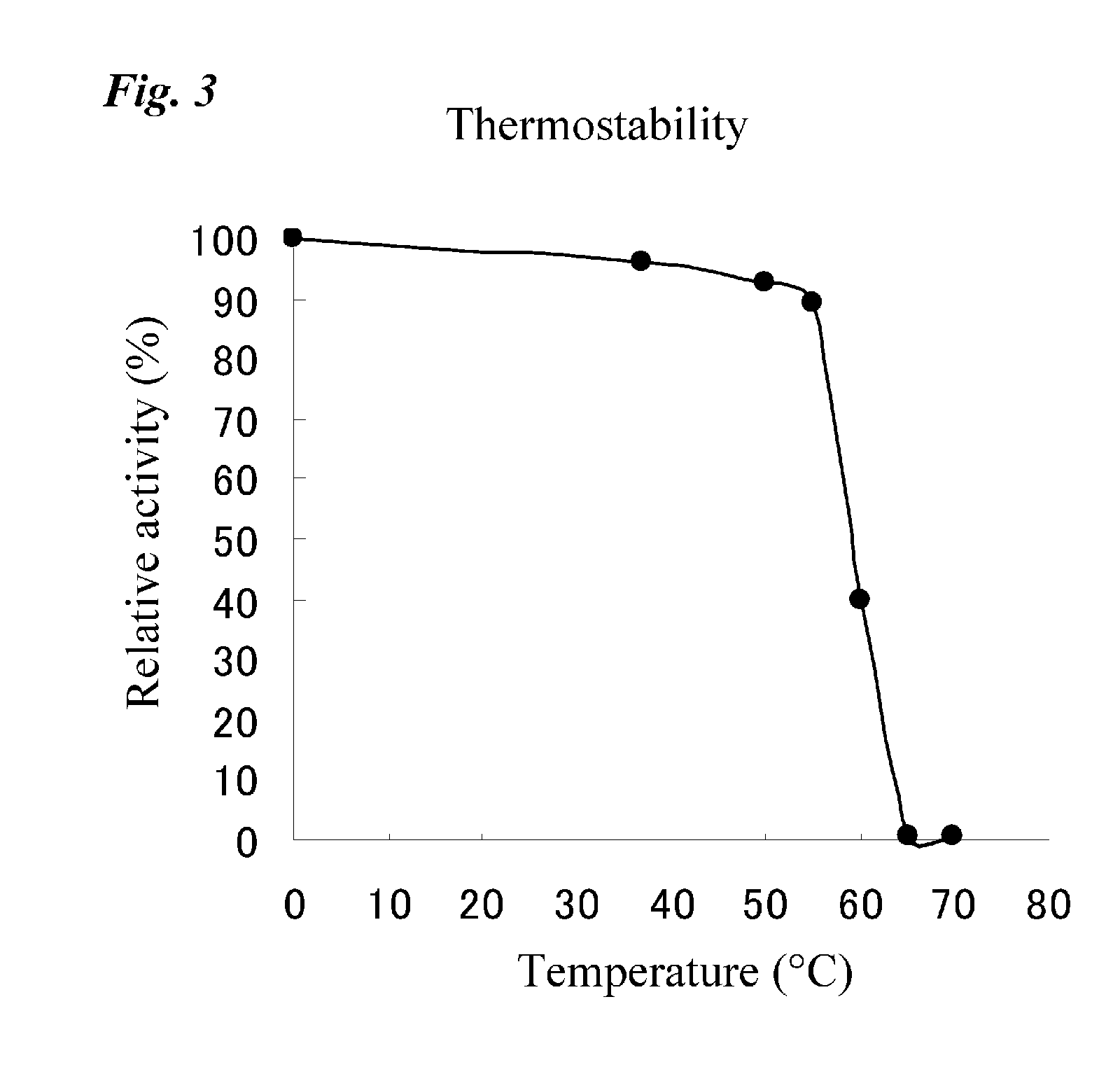Method for improvement of foods utilizing beta-amylase
a technology of beta-amylase and food, which is applied in the field of new amylase, can solve the problems of difficult securing of -amylase materials, low productivity of many bacteria, and hardly attained practical applications, and achieves excellent practical applicability, reduced productivity or difficulty, and limited production amount.
- Summary
- Abstract
- Description
- Claims
- Application Information
AI Technical Summary
Benefits of technology
Problems solved by technology
Method used
Image
Examples
examples
β-Amylase Activity Measurement Method (1)
[0088]A β-amylase activity was measured as follows. That is, 0.5 ml of an enzyme solution was added to 0.5 ml of 0.1 M phosphoric acid-hydrochloric acid buffer solution (pH 5.0) containing 1% soluble starch and 10 mM calcium acetate, and the mixture was incubated at 37° C. for 30 minutes, thereafter adding 2.5 ml of a DNS solution (0.2% DNS, 80 mM NaOH, 0.2 M potassium sodium tartrate tetrahydrate) to terminate the reaction. After termination of the reaction, the reaction mixture was boiled for 5 minutes, and an absorbance at a wavelength of 530 nm was measured. An enzyme amount when the absorbance at a wavelength of 530 nm is 1 is assumed to be 1 unit (U).
1. Confirmation of β-Amylase Derived from Bacillus flexus
[0089]Four strains of Bacillus flexus DSM1316, DSM1320, DSM1667, and APC9451 were subjected to shaking culture at 30° C. for 3 days using liquid media having compositions shown in Table 1.
TABLE 1Media for producing β-amylase(w / v)Corn...
PUM
| Property | Measurement | Unit |
|---|---|---|
| Temperature | aaaaa | aaaaa |
| Fraction | aaaaa | aaaaa |
| Acidity | aaaaa | aaaaa |
Abstract
Description
Claims
Application Information
 Login to View More
Login to View More - R&D
- Intellectual Property
- Life Sciences
- Materials
- Tech Scout
- Unparalleled Data Quality
- Higher Quality Content
- 60% Fewer Hallucinations
Browse by: Latest US Patents, China's latest patents, Technical Efficacy Thesaurus, Application Domain, Technology Topic, Popular Technical Reports.
© 2025 PatSnap. All rights reserved.Legal|Privacy policy|Modern Slavery Act Transparency Statement|Sitemap|About US| Contact US: help@patsnap.com



